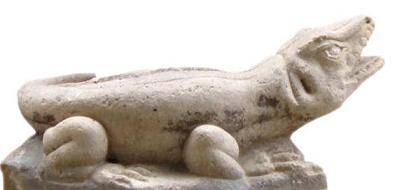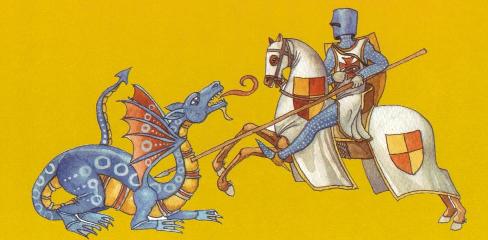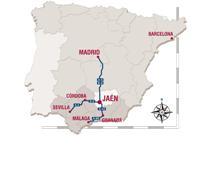The legend is, without a doubt, the most popular in the city, and has become one of Jaén’s symbols, taking part in the daily lives of its inhabitants.
THE LEGEND
A long time ago, Jaén was a prosperous city; however a beast lived in its Magdalena´s Spring Waters. The beast was as wild as a devil, ugly as a curse and hungry as a lion’s flock. This horrible beast, which the local people called "The Lizard", used to eat some pastiras (young ladies) that peacefully approached the Lizard’s spring to fill the amphoras with water each afternoon.
It is said, that at the beginning, the Lizard only ate one man or woman over a long period of time, maybe because it was still young and little. As the Lizard grew up, its stomach enlarged so much that it needed to eat a young lady every day. Early in the morning, it would also have a breakfast of a gentleman returning home after being with a maid or a sleepy gardener who approached the spring. The situation was unsustainable. No one approached its hideout. When hungry, it left the cave and explored the streets of La Magdalena, searching for food to relieve the pain of its enormous stomach. The situation could not have been worse.
One fine day, a brave prisoner proposed to kill the Lizard in return for his freedom. The council accepted his strange proposition and he met with them to explain his plans to kill the beast. If he succeeded in the enterprise he would be released from prison. He asked the council if they could give him a sheepskin from a recently dead sheep (so it would smell as if the animal was still alive), gunpowder, a big bag of warm bread (to attract the beast with the smell) and a fast horse.
In the early moonlight, while the Lizard was sleeping, the prisoner rode towards the beast’s hideout. According to his plan, after the enormous beast awoke, it followed the trail of warm bread that the prisoner had left, until it arrived to San Ildefonso’s Square. There, the beast saw the sheepskin, previously filled with explosive material. The prisoner lit the fuse and the Lizard ate the sheepskin in one mouthful. The gunpowder burned the Lizard’s stomach, exploding with a tremendous noise heard throughout the entire city.
Some people say that the Lizard was killed by a valiant knight, others say that it was a shepherd whose sheep flock was killed by the beast or that the Lizard died after eating too much bread. It has also been said that it was killed by a knight dressed in mirrors.
Be that as it may, when the Lizard exploded three days of holidays was given to each square of the city. Streets were full of joy and wine. Young pastiras went to the spring to fetch water, farmers relaxed and the healers could heal again. Since then, when someone behaves in a bad way people say: “Thus you explode as Magdalena’s Lizard” because there has never been an explosion so noisy in the world
The Lizard legend is very important to our people. It is said that it was introduced in Jaén by the Phoenician merchants or even by Jewish people that entered the country during the Roman Period.

INTANGIBLE CULTURAL HERITAGE
Jaén’s Lizard was declared as one of the 10 treasures of the National Intangible Cultural Heritage.
Intangible Heritage is defined, according to the Defence of Intangible Heritage Convention of UNESCO, as the costumes, representations, expressions or knowledge that a group of people consider as part of their own cultural heritage. Some features of this Heritage are: generational transmission, use in daily life and created by local people in connection with the city’s nature and environments, sense of identity to the population, promotion of the cultural diversity, human creativity and the tolerance between different groups of people and it needs to be linked with the sustainable development of the environment.
(Source: Iuventa Cultural Association)

















